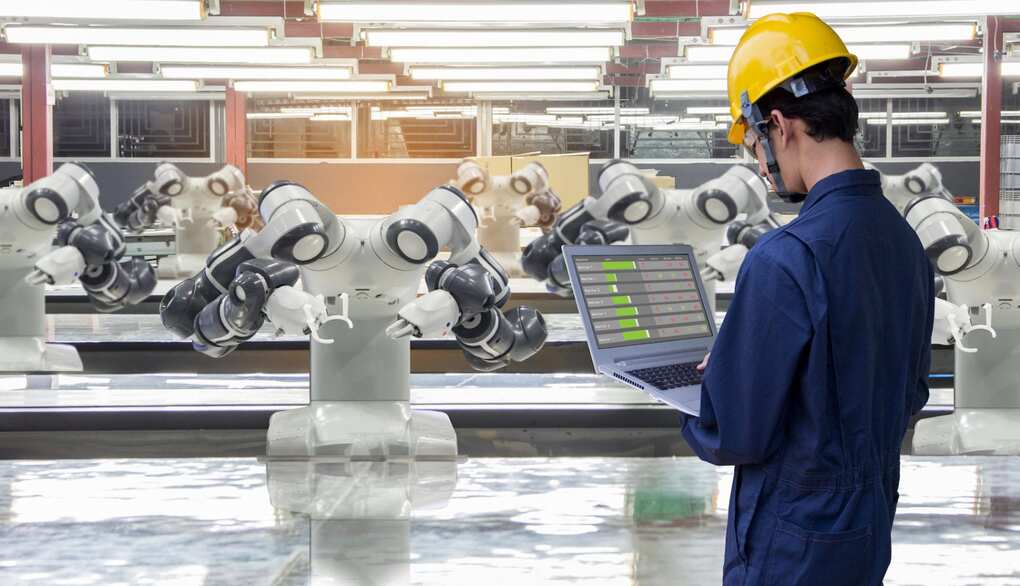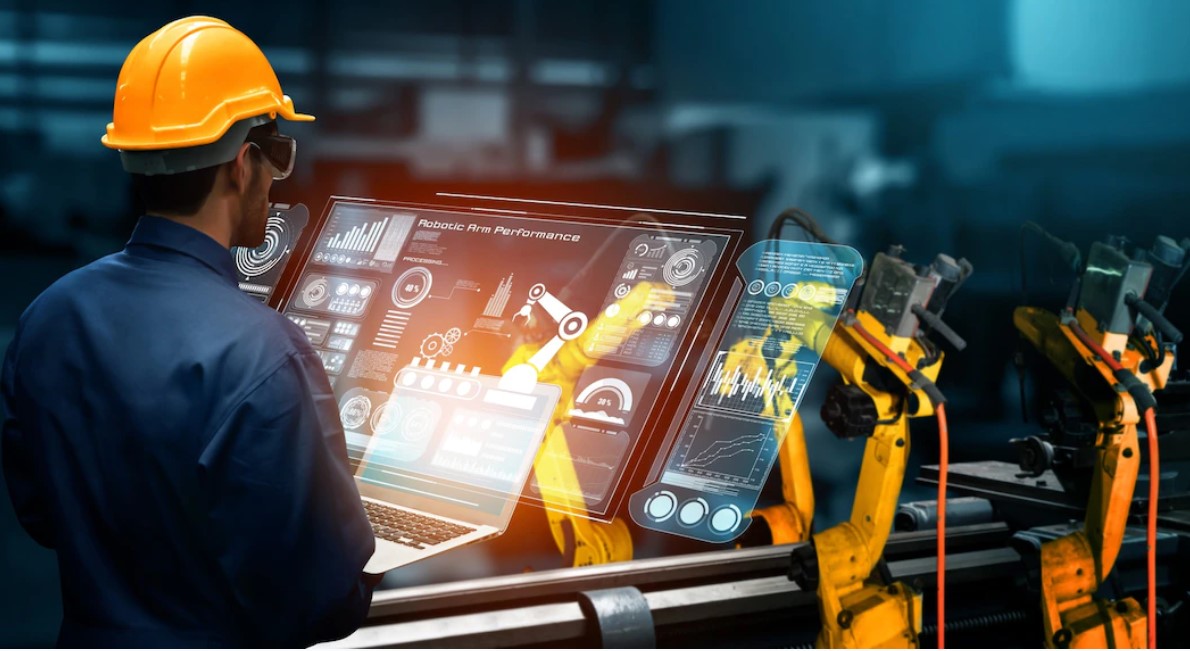Manufacturing has evolved a great deal over the past century. With new, advanced technologies driving the industry forward, manufacturing is clearly going down the path of information and automation. Technologies like artificial intelligence and machine learning, sensors and Internet of Things, and more are fundamentally changing the way the manufacturing industry operates. With all of this change, it’s important to understand the trends driving the industry forward so that our businesses can adapt and grow.
Smart Manufacturing Trends of 2022: pursuing perfection
In all industries, the most efficient solution is normally the best choice. The same applies for manufacturing. The innovative technologies driving the industry into the future are rooted in ideal solutions. What would be the perfect solution to produce a particular product in a factory? How close can we get to that ideal?
The idea of smart manufacturing is a completely automated factory with a layout optimized by artificial intelligence. Human intervention leaves room for human error, so it must be minimized as much as possible. These kinds of factories in theory are also safer because human workers are not put at risk of short or long-term injury.
This ideal isn’t completely possible just yet, but many manufacturing technologies in 2022 are remarkably close to achieving this goal. According to Fortune Business Insights, the global size of the smart manufacturing market was $249.56 billion in 2021 and is predicted to rise to $277.81 billion in 2022. With these innovative technologies only expected to accelerate the growth of this sector, it’s important to understand the nuances of these technologies to maintain a competitive business.
Technologies that Drive Smart Manufacturing in 2022
Smart manufacturing covers a range of different technologies. These are generally categorized into robotics, artificial intelligence, and the Internet of Things. There are various technologies that exist within these categories, and they often overlap in various ways. For example, many AI technologies in manufacturing rely on data provided by IoT sensors.
1 Robotic Process Automation
Not to be confused with physical hardware robotics, robotic process automation automates software tasks to simplify the manual work of employees. A few types of tasks that can be automated are:
- Back-office tasks
- AR/AP tracking
- Vendor management
- Inventory management
There are many more applications that robotic process automation can help with, but the possibility to automate various tasks like these is an important technology for smart manufacturing in 2022. One of the common themes that surround this topic is the concept of chatbot personalization. Conversational AI has the potential to greatly automate customer service, troubleshooting, and reporting services for employees.
2 Artificial Intelligence and Machine Learning
The role of AI in smart manufacturing is a matter of efficiency. Complex AI and machine learning (ML) algorithms are designed to make the most of existing technologies, keep machinery running longer, and find ways to make factories highly productive while generating the least cost. One of the most popular machine learning use cases in manufacturing is predictive maintenance. Waiting to perform maintenance until machinery breaks down is costly for businesses. In conjunction with special IoT sensors, however, ML algorithms can be applied to predict when machines should be serviced ahead of time before they can break down. There are also a number of other use cases for ML in manufacturing, such as machine vision for visual inspection.
3 Digital Twins
The concept of a digital twin comes from the idealistic nature of how we use artificial intelligence. If we are looking for the most efficient way of setting up our production line, it’s very difficult to test the efficiency of our layout. To solve this problem, the concept of a digital twin digitizes the testing process. By digitizing our factory floor into a simulation-based on reality, the pieces of our production line can be rearranged and modified in the simulation to look for the most optimal layout.
However, digital twins are not quite like simulations. Unlike a static simulation, engineers can see data based on real-world conditions. This data comes from sensors in the real world. This ensures that the digital twin is based in reality for a more accurate picture.

4 Cloud Technologies
Manufacturers are moving to storing data securely on cloud storage networks for a number of reasons. One reason in particular, is that manufacturers gain the benefit of accessing data on demand securely from anywhere in the world. Another reason is that storing data in the cloud is cheaper than storing it on site. When businesses store their data securely in the cloud, they reduce the cost of fees for IT support and storage hardware at each of their production sites.
Cloud storage is also highly scalable and elastic. If more storage is necessary, it’s easy to add more. For physical on-site storage, this may not be so easy. There are some challenges to be considered when performing cloud migration for certain services, but ultimately the benefits far outweigh the costs depending on the nature of your business. While the cloud has many benefits, there are always security risks. Remember that you should pay attention to cloud infrastructure security to protect your data.
5 Internet of Things (IoT)
Many people assume that artificial intelligence is a game, changing technology on its own. However, AI and machine learning technologies rely heavily on data. One of the reasons why artificial intelligence has become so useful in manufacturing environments in recent years is because of advances in Internet of Things. More specifically, the proliferation of sensors in factories has helped to power AI applications like predictive maintenance, digital twins, automated power management, and computer vision-powered quality assurance.
Another reason why Internet of Things technologies have become more popular in industrial spaces is because of advances in wireless connectivity technologies. 6 GHz Wi-Fi has made connectivity between a network of many small devices more feasible in indoor settings. However, a challenge that many companies will face over the course of this year is dealing with the current chip shortage. This has led to scarcity in terms of procurement of new devices.
The Future of Smart Manufacturing
There are many innovative technologies reshaping the way that we think of smart manufacturing in 2022. Increased competition between regions and nations around the world has led to a revolution in manufacturing technology, and that progress will continue into the future.
However, simply understanding the technologies behind smart manufacturing is not enough to keep your business competitive. Applying them in a new and unique way will carve a path into the future for your business. It’s also important to consider the limitations that your business has to work with. For example, the chip shortage ongoing this year is limiting the number of devices that can be added to factory floors. When faced with limitations like these, bricolage may be a manufacturer’s best friend. Those that can adapt to the limitations of 2022 and make the most of available technologies will safeguard their company’s pathway into the future with smart manufacturing.
The publication of this article has been extracted and freely adapted from the iotforall.com article by Oleksii Tsymbal – April 2022

